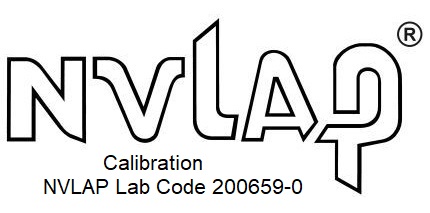 The Metrology Laboratory’s Rob Massey has a rock-steady hand when it comes to calibrating lab weights and measures. The ORNL Metrology Laboratory’s Brian Sizemore says he pulled a hair out of his head one day and weighed it. The scale read 210 micrograms. Keep that figure in mind. The Metrology Lab recently received accreditation from the National Voluntary Laboratory Accreditation Program in the areas of mass, mass balance, relative humidity and laboratory thermometers. The lab is now accredited to calibrate mass sets and is the world’s first such facility that can provide NVLAP-accredited calibrations of analytical balances—of which ORNL has around 350—in the field. The NVLAP accreditation means that data collected on ORNL’s Metrology Lab-calibrated instruments—including mass sets, balances (or commonly referred to as scales)—are traceable to the National Institute of Standards and Technology standards. And because the accreditation is traceable to SI units, the data also meet international standards, which is critical in a global research environment. “The accreditation came after a heavyweight NVLAP assessment,” Brian says, with no pun intended. “It was an extremely rigorous evaluation.” Because the Metrology Lab went through NVLAP’s accreditation paces, researchers across the Lab can be assured that their instruments are reading correctly. “We can tell our customers what something weighs to one-tenth of a microgram,” says Brian, who is task leader in the lab, located in Building 2547. “That’s 0.0000001 grams.” The stainless steel weight sets used by researchers come in sizes from tiny to just small, all packed into a little kit. They are so precise that the slightest environmental change can affect their readings, including dust, temperature, magnetism, air pressure or, for that matter, air. “A cubic centimeter of air actually weighs 1.2 milligrams at standard conditions. We have to account for air buoyancy,” Brian says. “By calculating air density, we can account for it.” The Crafts Resources Division’s Rob Massey, a machinist by trade, is the lab’s master calibrator. His daily regime is to carefully check the accuracy of weights from one milligram—which is a little triangle of fine wire about as large as this W—to 50-pound dumbbells. Metrology Lab's Program Manager, Mike Duncan praises Rob’s rock-steady hands and concern for customers. He also gives Rob high marks for buying into the NVLAP accreditation program. “Rob has mastered the art of taking good measurements. He changed his whole way of doing things,” Mike says. So how does Rob handle a weight that weighs only one-thousandth of a gram? “Very carefully,” Rob responds. Building 2547, located next to the central campus “green door” machine shop, is the last place you would expect to find one of the world’s state-of-the-art calibration labs. The lab is nestled in a building within a building, with careful climate control, kitchen-cleanliness and flypaper door mats to remove dust from shoes. With the planned central campus clean-up, the lab will likely move to new quarters in the coming years. The NVLAP auditors’ initial skepticism—huge milling machines are located just outside—was overcome once they saw the improvements made to the facility. For example, they said an overhead manipulator that Rob uses to hoist the heavier weights was one of the best such systems they had seen. The lab aced the audit, with no deficiencies or opportunities for improvement cited. “Nobody thought we were that good,” Mike says. “We’re good enough to calibrate mass sets that are good enough to calibrate analytical instruments, with reduced uncertainty.” Mike also says the Lab’s drive to become a world-class research facility led to their campaign to become world class in calibrating the instruments they use, including scales and weights. “Our researchers can now have a high level of confidence and integrity in the measurements they make. This is one of the top 10 mass labs in the country,” Mike says. The lab’s researchers depend on precision, and the Metrology Lab now provides it. “Write your name on a piece of paper and we can tell you what the ink weighs,” Mike says. Which brings us back to Brian Sizemore’s strand of hair, which weighed in at a comparatively robust 210 micrograms. “We can split hairs,” he says. That’s an understatement. This lab can split air.—B.C. | |

